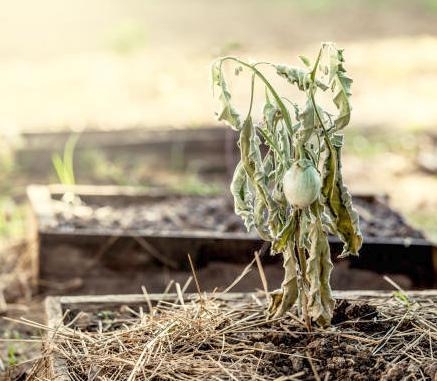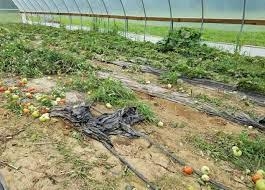Gardeners everywhere must be ecstatic that after the last two years of drought, it's raining. But unfortunately, the abundance of rain has been problematic in many ways, including in our gardens.
Spring is around the corner and gardeners with rakes, spades, pruners and shovels are anxiously looking forward to gardening in the moisture rich soil. But before we all venture outdoors, getting started in our gardening frenzy, there are a few things gardeners need know about the down side to our gardens after all the rain and what we can do to ensure our gardens thrive in spite of all the rain.

Is there anything gardeners need to consider after all the rain in California, specifically in the San Joaquin area? Yes, according to the University of Florida Institute of Food and Agricultural Sciences, heavy rains can do lots of harm to a garden and landscape such as damage tender plants, wash away mulch and erode soil from around plant roots and much more.
Injured or dead plant parts should be pruned immediately after a storm to allow the plant to recover. Too much rain, combined with warm summer temperatures can create an ideal environment for bacteria and fungal problems.
Plants should be monitored for signs of diseases, spots, or discoloration on foliage, rotting or wilting stems, fruits or even the entire plant. If the soil is really saturated after a heavy rain and there is concern about root rot, help the soil dry out by removing the mulch from around plantings for a few weeks. Take care not to walk on the muddy, wet soil near plants — this increases compaction, which can in turn hurt plant roots.

Since we can't control the weather, the best we can do is be proactive by keeping an eye out for problems before they occur. Remove fallen leaves and other debris to avoid spreading disease. Make sure plants are dry before pruning, as disease can spread easily in water.
Wait to fertilize until next season. Fertilizer won't help your plants recover any faster and the next heavy rain will wash it right off and into the nearest water body.
In a recent Los Angeles Time article, gardening expert, Rosalind Crease, author of “Edible Landscaping” recognizes that gardeners may be tempted to plant in soft, damp soil after years of drought.
She suggests waiting until the rain has stopped for a few days before planting.
Lili Singer, horticulturist from the Theodore Payne Foundation for Wildflowers and Native Plants recommends against even walking on set soil which could cause compaction.
Waterlogged soil can result in a change in texture of the soil around the newly planted plant causing the soil to become more dense, according to Richard Hayden, head gardener at the Natural History Museum of Los Angeles.
Author C. Darren Butler of the online resource Garden Zeus, recommends adding mulch to the ground to prevent and minimize any soil erosion that could expose plant roots. He also recommends planting new seedlings a few days after a rain when soil is moist (but not saturated) which will help with germination of the plant. Butler also suggests keeping an eye on new seedlings to ensure root crowns or upper roots aren't too exposed after rain which can harm the plant.
If a garden becomes waterlogged after heavy rain, it may benefit from some kind of drainage solution. Without too much effort, a garden land drain, soak away, or other form of drainage can remove standing water and prevent your garden from becoming waterlogged.
Butler also advocates gardeners be on the look-out for weed sprouts after rains that can become prolific in the garden. The weed sprouts can easily be removed while the soil is still moist.
Take a good look at your landscape. Are there areas that stay especially wet, even puddle? Consider a planting a rain garden with plants that can handle both wet and dry spells. If drainage is an issue for your soil type, you might want to plant in raised beds.
Look for fresh exposure or slumping on fence posts, foundations, or trees that result when the ground sinks. Another potential sign is called ponding, when small ponds of rainfall form where water had not collected before.
As with all things in gardening, take a moment to closely observe your garden areas during and after rainy weather. Be proactive in making the needed changes to help where you can to help your garden make it through the days when too much rain can be harmful to your plants.